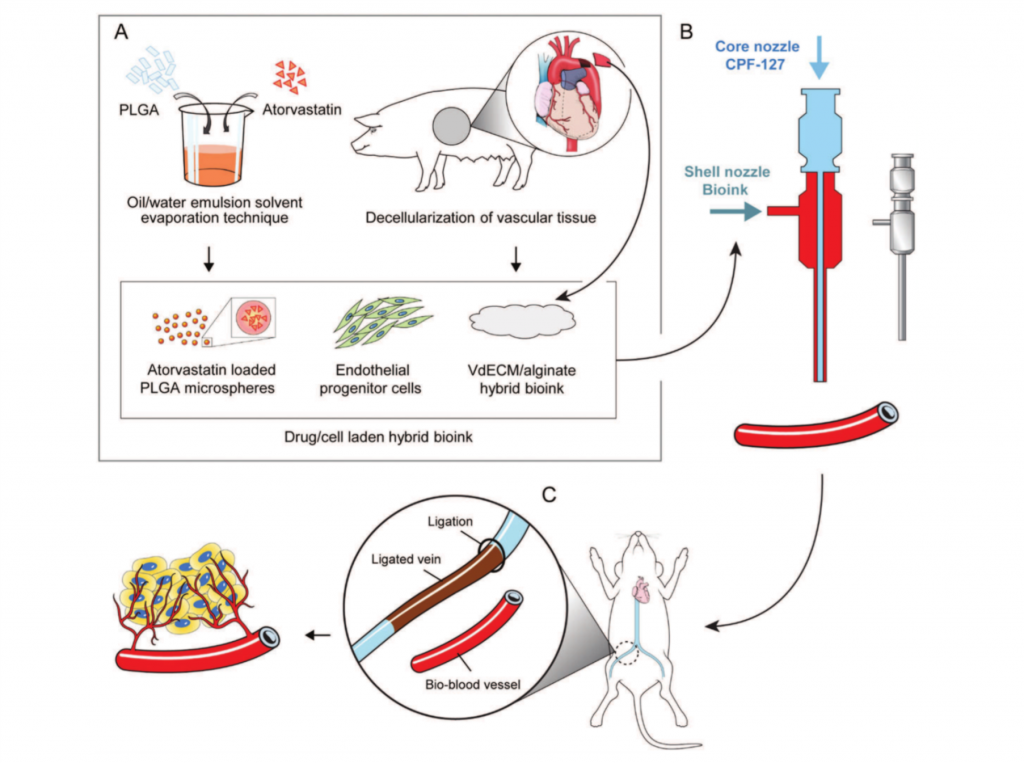A research team at Korea’s Pohang University of Science and Technology (POSTECH) has used 3D printing to develop bio-blood-vessels (BBV) from a bioink made of vascular tissue.
The results of the work are published in a new study that shows how tissue engineering with 3D bioprinting can open, “new avenues for regenerating ischemic diseases, replacing injured blood vessels, direct building prevascularized tissue/organ, and constructing vascular models and biochips.”
Under certain circumstances the human body will form new blood vessels in a process called neovascularization in areas where they do normally occur. One cause of this is ischemia, a restriction of blood supply to living tissue. Ischemic environments present unfavourable conditions for cell growth due to the low nutrition, oxidative stress, inflammation and reactive oxygen species present.
Narrowing of arteries through ischemic disease reduces blood flow. This restricts the amount of oxygen available to organs and other parts of the body. When ischemia decreases blood flow and oxygen to the heart this can cause chest pain and eventually led to a heart attack.

Making a customized bioink
To address ischemic disease the researchers produced a bio-blood-vessel using a novel hybrid bioink. The bioink combines, “vascular-tissue-derived decellularized extracellular matrix (VdECM) and alginate).” The ink was then used with “a versatile 3D coaxial cell printing method for delivering EPC and proangiogenic drugs (atorvastatin) to the ischemic injury sites.”
By using this method the vessels served as drug carriers and could release the necessary medication in the appropriate area, boosting the possibility that an implant would be successful.
“It is possible to generate desired blood vessels using 3D printing technology. In the future, I believe different types of implants such as the creation of arteries by layering walls of blood vessels will be possible,” said Professor Jang Jin Ah.

The new research continues advances also made at POSTECH. In June, 3D Printing Industry reported how researchers had developed a skin 3D bioprinting process. In that research it was demonstrated that through use of 3D printing, costs to to produce skin cultures could be decreased and time saved. The resulting 3D printed skin has application for human transplant and also for the replacement of animal testing.
The new research paper can be read in the September issue of Advanced Functional Material.
Tissue Engineered Bio-Blood-Vessels Constructed Using a Tissue-Specific Bioink and 3D Coaxial Cell Printing Technique: A Novel Therapy for Ischemic Disease was authored by Ge Gao, Jun Hee Lee, Jinah Jang, Dong Han Lee, Jeong-Sik Kong, Byoung Soo Kim, Yeong-Jin Choi, Woong Bi Jang, Young Joon Hong, Sang-Mo Kwon, and Dong-Woo Cho.
Stay up-to-date with the latest 3D printing research and news by subscribing to our newsletter and following us on twitter and Facebook.



